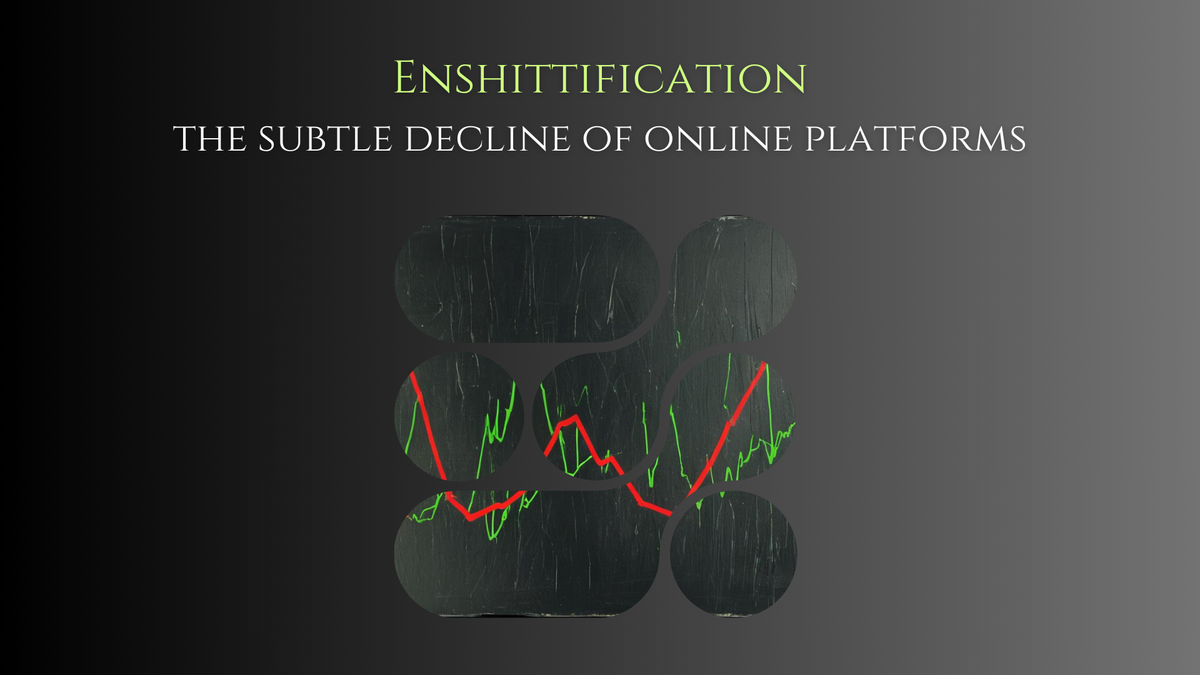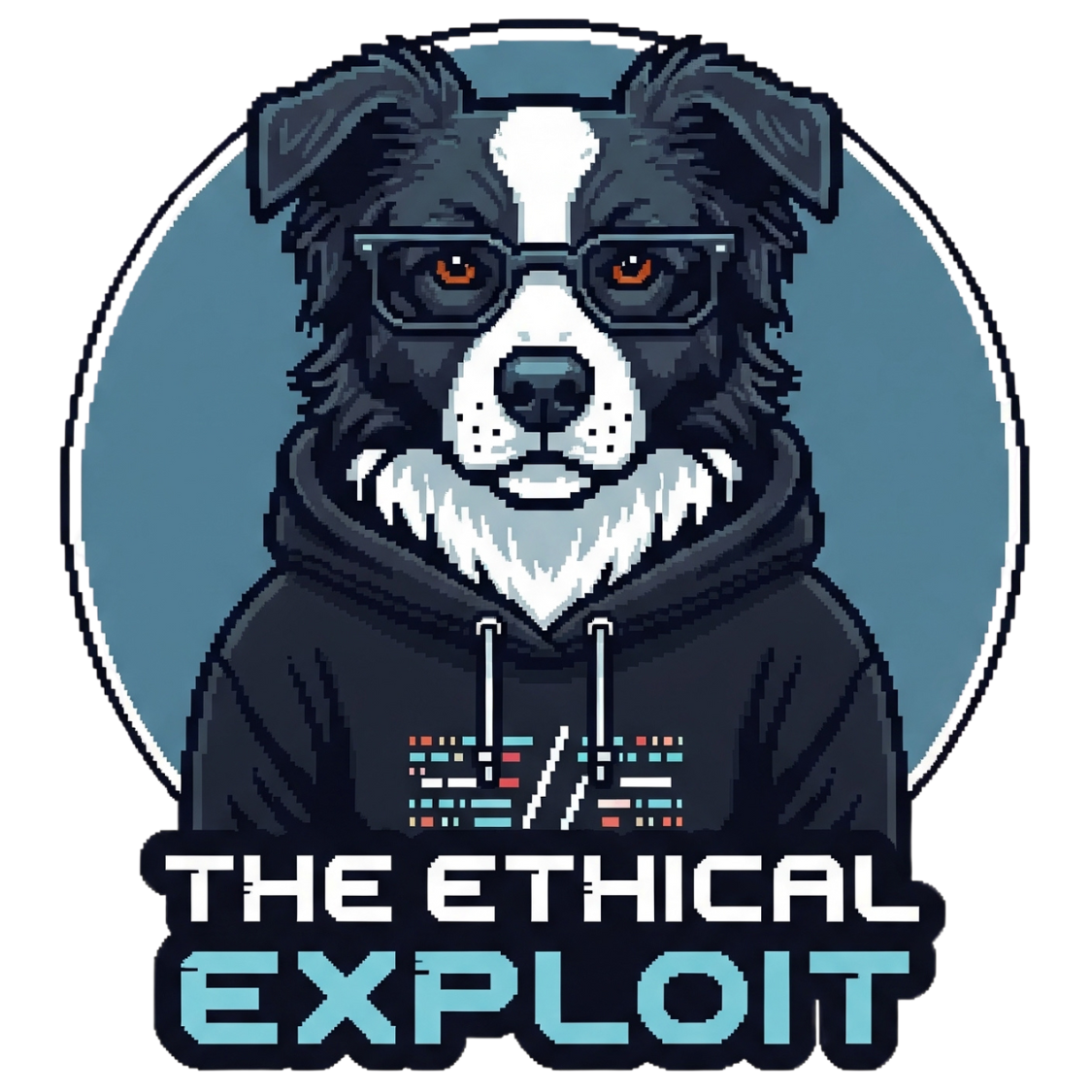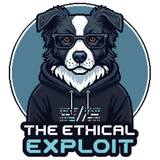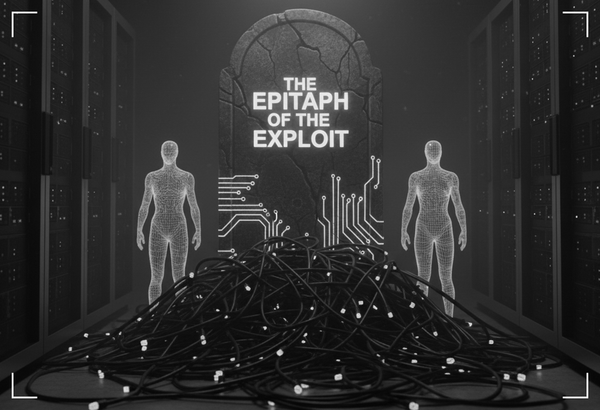Enshittification: the subtle decline of online platforms
Remember when the internet felt like a vast, open frontier of possibility? A place where information flowed freely, connections were forged across continents, and innovation seemed limitless?

Remember when the internet felt like a vast, open frontier of possibility? A place where information flowed freely, connections were forged across continents, and innovation seemed limitless? Those were the halcyon days of the digital revolution, a time when tech visionaries promised to make the world a better place, one click at a time.
Fast forward to today, and that utopian dream feels increasingly distant. The vibrant digital landscape we once knew has been slowly, almost imperceptibly, transforming into something far less inspiring. This transformation, aptly termed enshittification by tech journalist and activist Cory Doctorow, is the silent killer of the internet's potential, a creeping rot that threatens to undermine the very foundations of our digital society.
At its core, enshittification is the gradual degradation of online platforms and digital products as they prioritize short-term profits over long-term user satisfaction and value creation. It's a phenomenon that should concern not just casual internet users, but IT professionals, security experts, and business leaders alike. For in this process, we're not just losing cool features or user-friendly interfaces – we're losing the promise of what technology could be.
The trajectory of enshittification is as predictable as it is disheartening. Doctorow outlines a clear pattern (https://pluralistic.net/2023/01/21/potemkin-ai/#hey-guys):
Here is how platforms die: first, they are good to their users; then they abuse their users to make things better for their business customers; finally, they abuse those business customers to claw back all the value for themselves. Then, they die.
It begins with the golden age of a platform, a time of genuine innovation and user-centric design. Think back to the early days of your favorite social media platform or productivity tool. Remember the excitement of discovering new features that seemed tailor-made to enhance your digital life? That's no accident. In this initial phase, platforms are laser-focused on building a loyal user base, often at the expense of immediate profitability.
But as user numbers swell and market dominance is established, priorities shift. The platform, once a paragon of user experience, begins to pivot towards business exploitation. Suddenly, your feed is cluttered with sponsored content, your search results are skewed by paid placements, and the features you loved are buried beneath a mountain of "monetization opportunities." The clarity of purpose that once defined the platform becomes muddied by the relentless pursuit of revenue.
The final stage of enshittification is where things truly fall apart. In a quest to maximize shareholder value, platforms begin to exploit both users and business customers alike. User experience degrades, costs increase, and functionality is reduced to the bare minimum needed to keep users from jumping ship. It's a race to the bottom, where each quarter's profits take precedence over long-term sustainability or genuine value creation.
For those of us in the IT and security sectors, this trend is more than just an annoyance – it's a ticking time bomb. As platforms prioritize data monetization over user privacy, we're seeing increasingly aggressive data collection and sharing practices. This not only creates new vulnerabilities but expands the attack surface for potential breaches, putting sensitive information at risk.
Moreover, the constant tweaking of algorithms and features in the name of "engagement" leads to system instabilities and unexpected behaviors. For IT teams tasked with maintaining security protocols and ensuring system reliability, it's like trying to hit a moving target while blindfolded. The shift towards closed, proprietary systems in pursuit of user lock-in further complicates matters, creating interoperability nightmares and raising serious concerns about data portability and user autonomy.
But the implications of enshittification extend far beyond technical challenges. It's stifling innovation across the entire tech ecosystem. As established platforms focus on extracting value from existing products rather than pushing boundaries, we're seeing a slowdown in the pace of technological advancement. This creates a hostile environment for startups and new entrants, potentially smothering the next wave of groundbreaking technologies before they can even take root.
Perhaps most concerning is the erosion of trust in digital platforms and technology companies. As users become increasingly aware of how their favorite platforms are changing – and not for the better – skepticism grows. This climate of distrust could hinder the adoption of new technologies and services, creating a self-fulfilling prophecy of digital stagnation.
So, what's to be done? As IT professionals and digital citizens, we have a responsibility to push back against this tide of mediocrity. We need to advocate for open standards and interoperability, ensuring that users retain the ability to move between platforms and services. We must prioritize user privacy and data control, implementing robust protection measures and giving users genuine agency over their digital lives.
We need to foster a culture of continuous innovation, even for established products. This means viewing our digital creations not as finished products, but as evolving ecosystems that require constant nurturing and improvement. Transparency should be our watchword, particularly when it comes to algorithmic practices and data usage.
Most importantly, we need to shift our focus back to long-term value creation, resisting the siren song of short-term profits and educating stakeholders about the importance of maintaining user trust and satisfaction for enduring success. It means exploring new technologies and architectures, including decentralized systems, that could create more resilient and user-centric digital environments.
The battle against enshittification is not just about preserving the quality of our digital tools and platforms. It's about safeguarding the very principles of innovation, user empowerment, and technological progress that have defined our age. As we stand at this crossroads, we have a choice to make. Will we allow the internet to devolve into a wasteland of ad-driven, data-hungry platforms that prioritize profits over people? Or will we fight to reclaim the promise of a truly open, innovative, and user-centric digital future?
The answer to that question will shape not just our online experiences, but the very fabric of our society. It's time to take a stand. Let's reject the path of enshittification and instead chart a course towards a digital landscape that serves humanity's best interests – one that's not just profitable, but genuinely beneficial to all who inhabit it. The future of the internet, and perhaps of technology itself, hangs in the balance.



